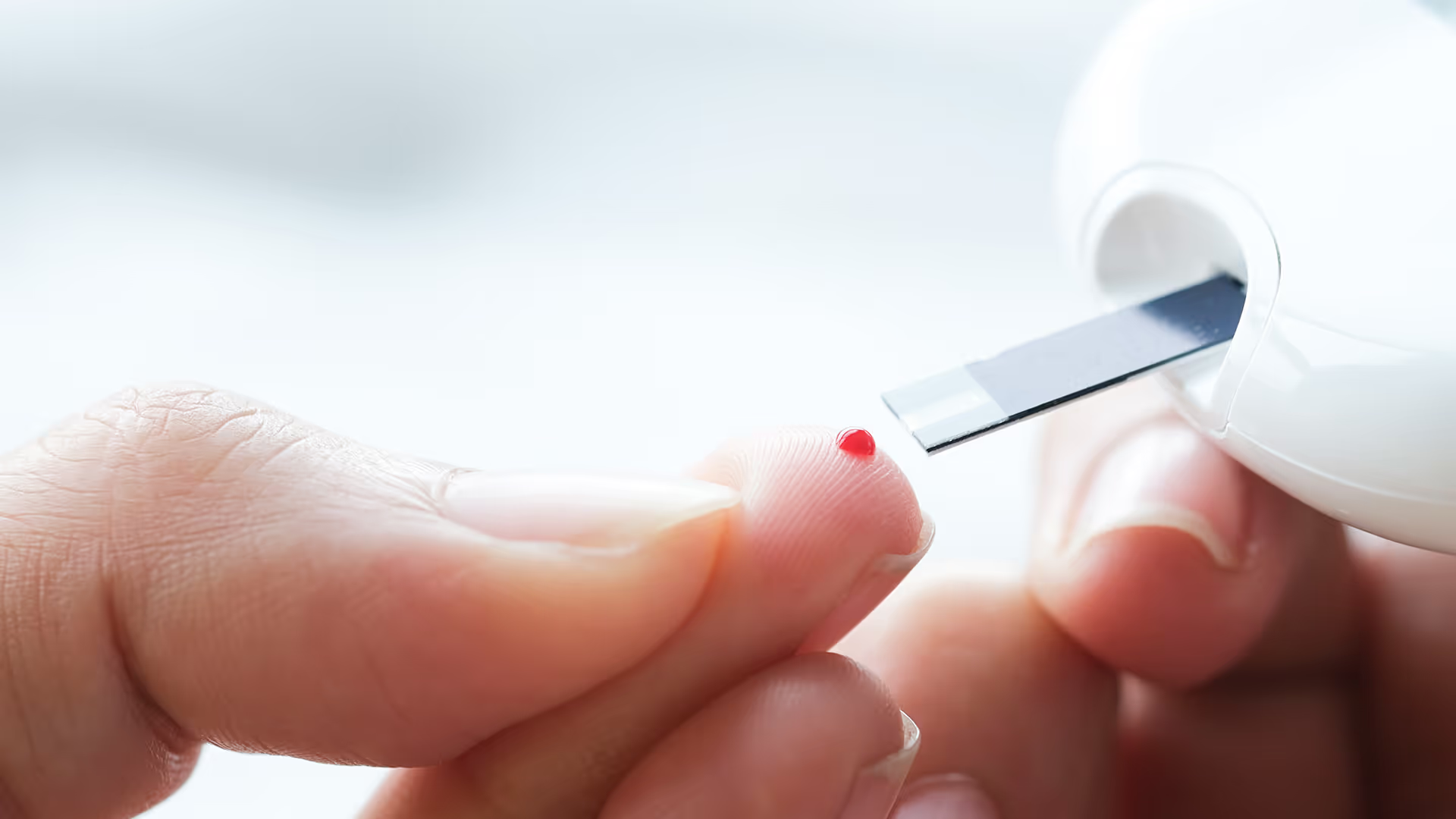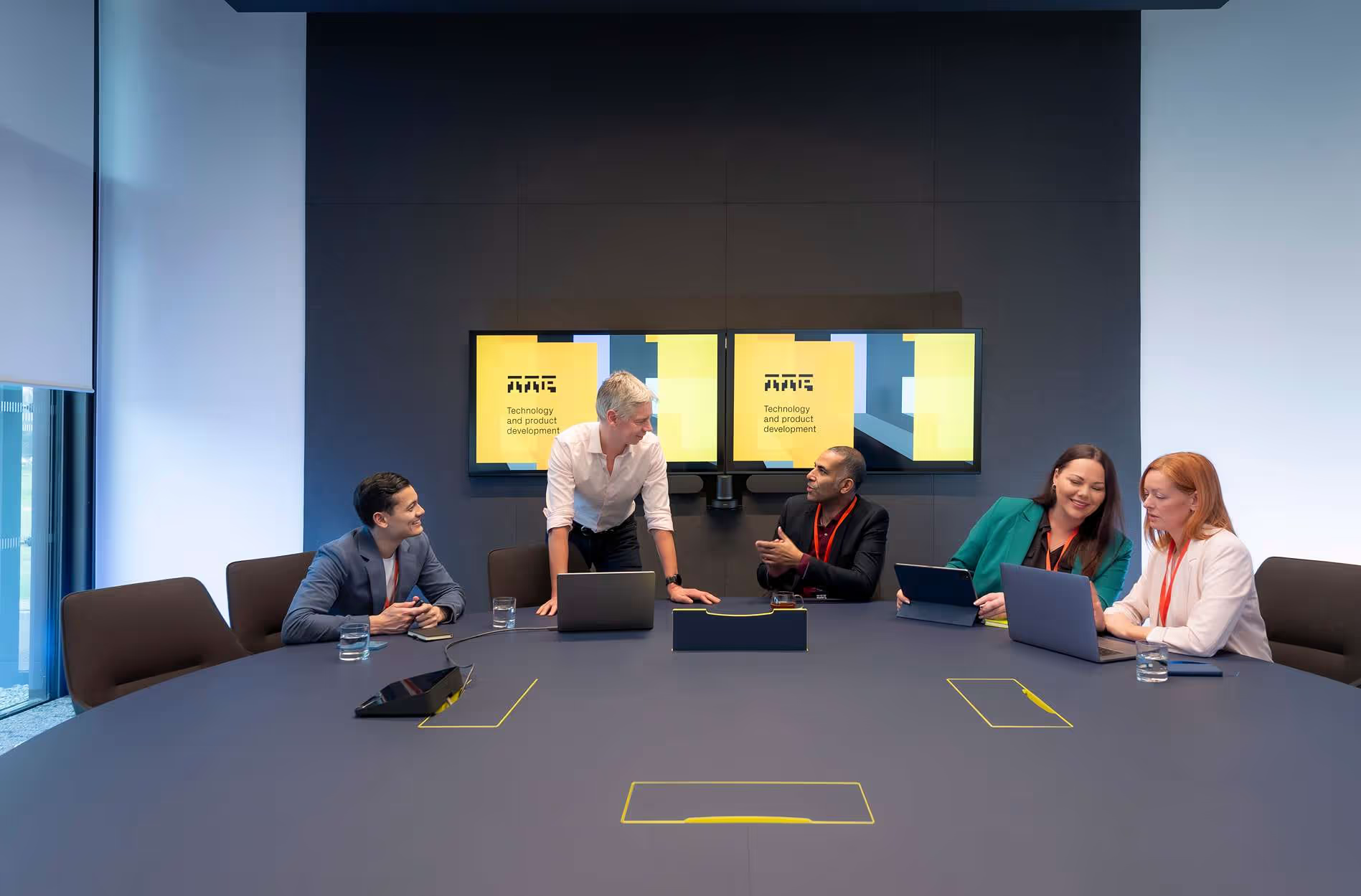When Roche needed to enhance the deposition of a reagent on glucose test strips, they turned to TTP to identify a solution that could be implemented with minimal disruption to their active manufacturing line.
Context
Roche needed to optimise the deposition of a reagent onto “fingerstick” glucose test strips, with minimum change and disruption to the manufacturing line.
Solution
TTP investigated the material deposition process at the heart of Roche’s manufacturing line - both experimentally and theoretically - enabling us to suggest the least disruptive solution.
Result
Our suggested change to the reagent supply tubing material not only improved deposition but could be implemented by Roche with minimum changes to a busy production line.
Optimising glucose sensor manufacturing
TTP’s clients typically call on us for the development of new biosensing products, but on this occasion, Roche approached us to optimise a manufacturing line for an existing product – a challenge we routinely tackle as part of our end-to-end device development process.
Roche wanted to fine-tune the manufacturing of their “fingerstick” glucose test strips. Use of these test strips for everyday glucose measurement by patients has now been mostly superseded by more convenient continuous glucose monitoring (CGM) products. But they remain widely used globally across hospitals and homes for calibration and as a backup for CGMs.
Accurate manufacturing therefore remains essential. Not only that, but because the test strips were already in mass production, Roche needed to find a solution with as little disruption and change to their manufacturing line as possible
Investigating material deposition- experimentally and theoretically
In common with similar projects we undertake for our clients, we replicated Roche’s manufacturing line in our engineering labs and modelled the setup using computational fluid dynamics.
High-speed videography showed that, although the reagent was, on average, deposited in the correct amount, individual droplets emerged from the nozzle asymmetrically and with varying volumes. CFD modelling suggested insufficient nozzle pressure as a major factor behind this.

Higher performance with minimum disruption
We then used our deep understanding of the process to consider possible solutions. One approach was to specify a higher performance reagent pump or change the parameters of the existing pump, but we suggested that a better option for Roche was to simply change the tubing carrying the reagent.

Metal tubing would have given the best results but might have interacted electrochemically with the reagent. Instead, our model-based understanding allowed us to identify an electrochemically inert engineering polymer with a high enough Young’s modulus to achieve sufficient transmission of the pressure pulse. Confirming this prediction, our lab tests showed that this led to clean ejection of the reagent.
This solution was implemented by Roche with minimal impact on a busy manufacturing line for their successful product.
Multidisciplinary expertise to support next-generation product development
The field of biosensing continues to evolve, with a focus on addressing new analytes, devising innovative form factors, and assessing multiple analytes on a single device. That requires managing reagents ever more precisely during manufacture, which in turn requires tighter tolerances, and a better understanding of fluid dynamics and how to control the subtleties of material behaviour.
Bringing together the requisite expertise in-house is not always easy – but it’s where we excel at TTP.
Our consultants have deep expertise across the breadth of continuous glucose monitoring (CGM) design and development – from fundamental science to advanced engineering – and find the solutions that meet the exacting needs of our customers. That’s true whether your requirements are in product design, prototyping, or production, or – as here – need to optimise a product that is already on the market.
Let’s talk
Do you need advice about biosensing? Talk to a biosensor expert to get a thorough analysis of your challenge.
About TTP’s Biosensing team
TTP’s biosensor device development specialists focus on creating advanced wearable and implantable devices, bringing together multidisciplinary expertise to deliver bespoke solutions for the most demanding requirements.
From exploring new frontiers to advancing your next breakthrough or accelerating your route to market, we tackle complex technical challenges with scientific and engineering discipline. We identify and mitigate risks early, ensuring outcomes that are both high-impact and centred on the needs of end users. When internal capacity is limited, TTP has the resources and know-how to step in and deliver. Read more about how we’re driving forward continuous glucose monitoring design and development.
Our Biosensing team forms part of TTP’s wider Medical Device Consulting team.








